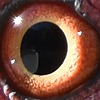HOME | DD
 TheBootesArtVoid — Acocado's... My Favourite!
TheBootesArtVoid — Acocado's... My Favourite!

#animal #animalphotography #animals #australia #australian #australiananimals #australianwildlife #endangered #endangeredspecies #kangaroo #kangaroos #marsupial #marsupials #natural #nature #photo #photography #photographyanimals #photographynature #photographyphoto #photos #threatened #thebootesartvoid
Published: 2022-06-25 01:58:47 +0000 UTC; Views: 1386; Favourites: 71; Downloads: 0
Redirect to original
Description
Species Name: Tree-Kangaroo
Species Latin Name: Dendrolagus
Native To: New Guinea and the far north eastern portions of Queensland
Conservation Status: Critically endangered to near threatened
Sub Species and Conservation Status:
Grizzled Tree-kangaroo (Dendrolagus Inustus); Located in northern and western New Guinea, the islnd of Yapen, and possibly Salawati and Waigeo. Conservation Status: Vulnerable
Lumholtz's Tree-kangaroo (Dendrolagus Lumholtzi); Located in Queensland, Australia. Conservation Status: Near Threatened
Bennett's Tree-kangaroo (Dendrolagus Bennettianus); Located in Queensland, Australia. Conservation Status: Near Threatened
Ursine Tree-kangaroo (Dendrolagus Ursinus); Located in the Bird's Head Peninsula, West Papua, and New Guinea. Conservation Status: Vulnerable
Matschie's Tree-kangaroo (Dendrolagus Dorianus); Located in the Huon Peninsula, Papua New Guinea. Conservation Status: Endangered
Doria's Tree-kangaroo (Dendrolagus Matschiei); Located in Western, Central, and Southeastern New Guinea. Conservation Status: Vulnerable
Ifola (Dendrolagus Notatus); Located in Schrader Range, New Guinea. Conservation Status: Endangered
Seri's Tree-kangaroo (Dendrolagus Stellarum); located in the highlands of west-central New Guinea. Conservation Status: Vulnerable
Goodfellow's Tree-kangaroo (Dendrolagus Goodfellowi); Located in central and southeastern New Guinea. Conservation status: Endangered
Golden-mantled Tree-kangaroo (Dendrolagus Pulcherrimus); Located in the Foja Mountains, Papua and the Torricelli Mountains, Papua New Guinea. Conservation Status: Critically Endangered
Lowlands tree-kangaroo (Dendrolagus Spadix); Located in the southwestern lowlands of Papua New Guinea. Conservation Status: Vulnerable
Dingiso (Dendrolagus Mbaiso); Located in the highlands of west-central New Guinea. Conservation status: Endangered
Tenkile (Dendrolagus Scottae); Located in New Guinea. Conservation status: Critically Endangered
Wondiwoi Tree-kangaroo (Dendrolagus Mayri); Located in the higher areas of the Wondiwoi Peninsula, West Papua. Conservation status: Critically
Photo Taken At: N/A
length: 48-90cm (19 – 35 inches)
Height: 76cm (30 inches)
Weight: 5.9kg-15kg (13 – 33 pounds)
Top Speed: 70.8kph (44mph)
Lifespan: 15-25 years
Description:
Tree-kangaroos look like smaller more stubby kangaroos. Generally these animals will have a long thick tail, long hind legs, and long sharp nails used for climbing trees. They have a sponge-like grip on their feet and paws. Like other kangaroos they have a pouch on the front of their bodies. Slight variation will be noted between the sub species, most notably the biggest variation will be the colouration of their fur which will usually be a variation of tan, cream, and brown. Other slight variations in the sub species will include variations to the shape of their head and face among other features.
Diet:
These animals will generally eat leaves, fruits, buds, some kinds of flowers, tree bark, fern, and grass shoots. It has been noted that in some cases these animals have eaten protein based foods such s eggs, birds, and snakes making them omnivores but likely with a preference for plant matter.
Behaviour:
These animals have been noted to be rather slow and clumsy when they are on the ground. Occasionally they will come down from their trees to forage for food where they will awkwardly hop around leaning forward heavily. When they are in the trees it is a much different story. It is noted that they are quite fast and agile when moving through the trees of their local habitats as they are expert jumpers.
These animals are generally very calm and they are generally very solitary in nature. The males and females will generally only interact with each other to mate and males will fight each other to maintain their respective territories.
After mating the mother will give birth to a single joey after a period of about two months. These marsupials have some of the longest in pouch/weaning periods with time being in the pouch ranging from 246-275 days and independence taking place about 87-240 afterwards. Females reach sexual maturity as early as 2 years where as the male will reach sexual maturity 4.5 years. The mother will develop a strong bong with her child as it develops but this only lasts until the joey has weaned. Once the joey has weaned both the mother and child will part ways and the solitary nature of this animal will resume once more.
Threats:
One of the largest threats facing all of the sub species of Tree-kangaroos include the loss of habitat for logging as well as for the generation of farms for coffee, rice, and wheat. The habitat loss will make the Tree-kangaroo's more exposed and vulnerable to being predated by feral dogs, snakes, and humans. These animals are regularly hunted by the local populations for meat and with general populations increasing this has only further contributed to the loss in numbers for this animal.
Conservation:
Like with many other protected species this animal has various breeding programs with the goal of sustaining and stabilizing these animals numbers despite the loss of numbers in the wild. One of the main issues when it comes to fighting extinction for these animals is the lack of information on them. Due to how Tree-kangaroos generally live isolated lifestyles often in hard to access places it is difficult to truly understand these animals. Furthermore it is currently unknown how many sub species of tree-kangaroo there are out there.
Further Reading (general information):
Wikipedia: en.wikipedia.org/wiki/Tree-kan…
A-Z Animals: a-z-animals.com/animals/tree-k…
Kidadl: kidadl.com/animal-facts/tree-k…
Australian Museum: australian.museum/learn/animal…
Related content
Comments: 7

👍: 1 ⏩: 1

👍: 1 ⏩: 0

👍: 1 ⏩: 1

👍: 0 ⏩: 0

👍: 1 ⏩: 1

👍: 0 ⏩: 1

👍: 1 ⏩: 0


























